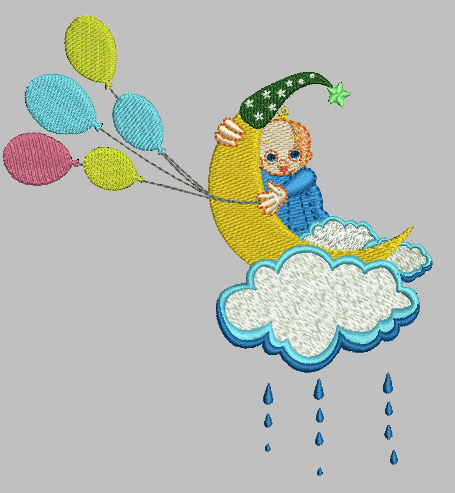Jump Stitches are considered very time consuming in Embroidery Business, if you have 1000 shirts to embroider and you have received a digitized design from your digitizer having Jump Stitches, you can not trim those threads on each shirt manually, and if you do so, it is going to cost time and money.
Jump stitches have been a problem of many embroidery digitizers –it can be a real pain and slow down your sewing process. As a professional digitizer, you must make conscious efforts in order to reduce the amount jump stitches in your work-piece. Total removal of the trims and jump stitches might not be possible but it is very possible to reduce the number of such.
What is a jump stitch?
A jump stitch can be simply put as the trailing or extra thread you see in your embroidery design –you notice that certain areas of design has the same color but are separated from each other different from the embroidery digitizer’s intent. Too many trims can make work really tiring –in some cases you have to manually trim the jump stitches with your hands which kills the whole fun of automation and is also more stressful.
With the knowledge of how much of a problem jump stitches can be to embroidery digitizing, having a solution to this will be a great relief for so many. Below are some of the ways to reduce jump stitches.
- Design Types: Avoid certain designs that have increased tendencies to jump, There is the problem of poorly made art or designs but it has been noticed that some designs have higher tendency to jump –It is common to designs that have more running stitches in them and consist of outlines alongside. The most annoying part about such designs is that it is really difficult to hide the jump stitches. Digitized arts involving more colors also causes increased jumps.
- Use Reputable Digitizers: Only make use of digitized designs from notable sources There are a whole number of free and cheap digital files found online, though, a great number of them have poor designs which can be a problem for us while digitizing. The bulk of free digitization we see have a common problem of poor digitization and no proper technique put in place to reduce the number of jump stitches. Try to always use digitized designs from reputable and notable sources.
- Effectively hide the jumps: You may want to ask if this is possible, well, the answer is yes! Move the path of the travelling stitch when you notice it has jumped and starts to sew again and turn it into multiple shorter ones that can be covered up later when you are using the main threads.
- Learn how you can efficiently edit digital design: Editing digital design is a very big option if you are into embroidery digitizing. Get conversant with the digitizing software and learn techniques on how you can edit, modify and improve digital designs in order to reduce jump stitches.
Jump stitches are a common problem of embroidery digitizers –it might not be possible to totally eliminate them but it is very possible to reduce them and have better results. Make use of the options above today to encounter lesser jump stitches in your work-piece.
Some embroidery softwares like Wilcom has an ‘Apply Closest Join’ feature to set the end and start points of the same color objects as close together as possible, It will minimize jump stitches.
Sometime your embroidery machine will not trim the jump stitches, while the digitized design is created to trim the jump stitches. Here are some point to check:
- Sometime the digitized design have jump stitches are too small to be recognized like .5 mm or less
- Make sure you have not set The Thread Trimming turned OFF
- Your embroidery machine require cleaning and services, make sure no dust collected around the moving knife or the thread retaining plate
